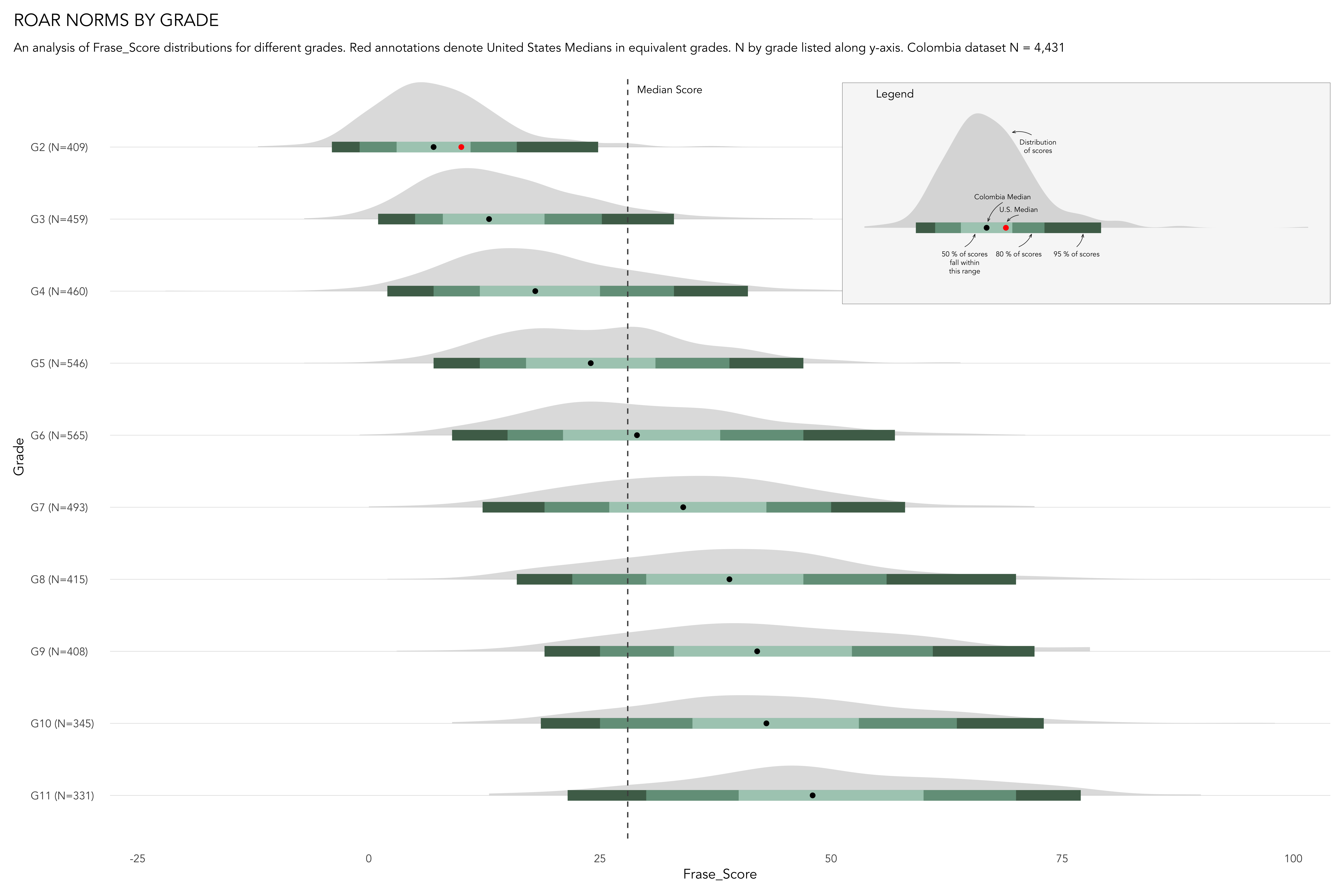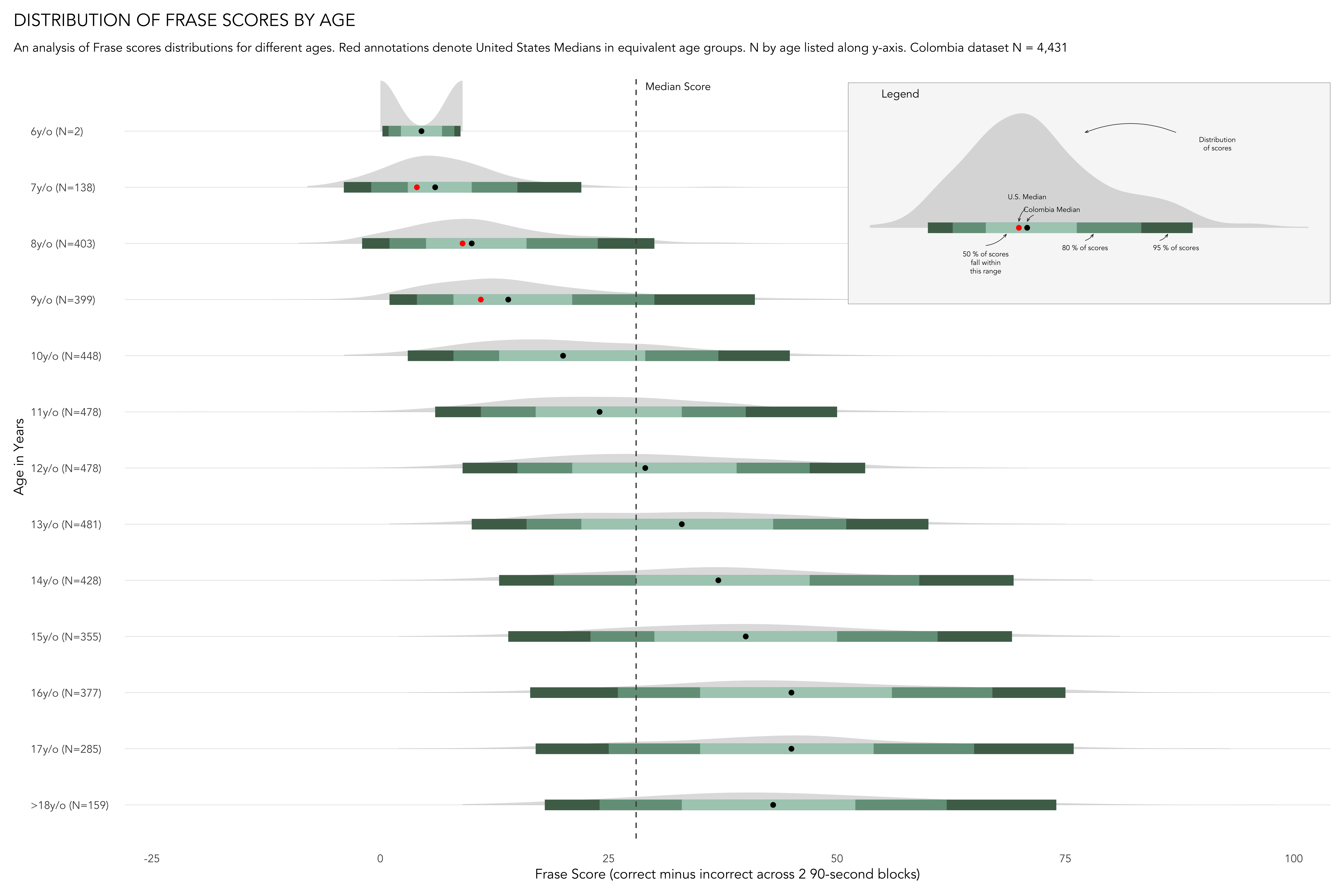
12 Spanish Sentence-Reading Efficiency: Eficiencia de lectura de frases (ROAR-Frase)
ROAR-Frase is a task designed to measure the speed with which a student can read and comprehend sentences (similar to Chapter 6). The student is presented with one sentence at a time and is tasked with labeling it as true or false as quickly as they can. The sentences are designed to require minimal background knowledge, have unambiguous answers, and use simple syntactic structure to avoid complex wording and structure. Importantly for Spanish speakers, careful attention was paid to ensure that sentence topics were diverse and not specific to the experiences of one group of students. This is especially important for creating a measure that is universal for Spanish speakers across South and Central Latin America as well as multilingual students in the United States, whose experiences might be very different. For example, sentences with topics about things like technology or big cities were avoided as there are several parts of Latin America where these sentences would effectively be testing students on their knowledge of ideas they were not used to interacting with (del Rosario Basterra, Trumbull, and Solano-Flores 2011; Hambleton and Kanjee 1995).
As stated previously, the ability to efficiently read sentences for understanding is paramount to reading development and is an area of reading that struggling readers, like those with dyslexia, often have a hard time with (Catts et al. 2024; Lyon, Shaywitz, and Shaywitz 2003). The structure of the sentences in ROAR-Frase is designed, as described above, to isolate a student’s reading efficiency by minimizing comprehension demands while still assessing for understanding in each sentence. Importantly, items are designed and validated to ensure cultural relevance across different Spanish language variations spoken in the US and abroad.
12.1 Other measures of silent reading efficiency in Spanish
The Woodcock-Johnson Manufacturers, who created the Woodcock-Johnson Tests of Achievement Sentence Reading Fluency sub-test (F. A. Schrank et al. 2014) that is used as a metric of comparison to English ROAR-Sentence (see Section 24.1.1), also adapted a version for use in Spanish. The Spanish measure, Woodcock-Muñoz Batería de aprovechamiento fluidez en lectura de frases (Fredrick A. Schrank et al. 2005), follows the same setup as the Sentence Reading Fluency measure in English. The student is given a booklet and a pencil and is instructed to read sentences silently and endorse as true or false as many as they can within three minutes. A proctor administers each assessment to a student individually, one on one, providing instructions for sample items and then guiding them through practice responses. The final score here is the total number endorsed correctly minus the total number endorsed incorrectly. In this assessment, skips do not count negatively.
12.2 Structure of the task and design of the items
As with ROAR-Sentence, ROAR-Frase uses a similar task design as the Woodcock-Muñoz Batería de aprovechamiento fluidez en lectura de frases. However, there are key differences: ROAR-Frase is delivered online rather than through a paper booklet, and it features gamification. Items in ROAR-Frase are designed specifically to tap into silent sentence reading fluency, and items are delivered such that students are forced to endorse each item they see rather than being able to skip items.
As is discussed in Chapter 6, the comprehension component that is often built into sentence reading tasks makes interpreting low scores difficult. Disaggregating comprehension from efficiency for a struggling reader is very difficult when the two skills are confounded within one assessment. In line with this, there is yet another facet of comprehension to take into account for Spanish speakers as their experience with the language itself may vary so drastically from one student to another (del Rosario Basterra, Trumbull, and Solano-Flores 2011; Hambleton and Kanjee 1995). By designing items that are unambiguously true or false, avoiding sentences that require content knowledge or knowledge related to specific experiences, and maintaining simple sentence structures, we aim to target reading efficiency more directly.
12.3 Scoring
ROAR-Frase, like ROAR-Sentence, is a two alternative forced choice (2AFC) task and is scored as the total number of correct responses minus the total number of incorrect responses in the alloted time window. This method of scoring controls for students who were engaging in guessing behavior by accounting for the number of incorrect responses.
12.4 ROAR-Frase Norms for Monolingual Spanish Speakers
As described in Section 10.3, an initial norming study was completed in a primarily monolingual Spanish speaking sample in Colombia. Participants completed two independent 90-second blocks of ROAR-Frase. ROAR-Frase was delivered to all students above 2nd grade in Colombia. We then ran another group of multilingual students in California in grades 1 and 2. Figure 12.1 displays the norms by grades and Figure 12.2 shows the norms by age. Scores for a representative sample of multilingual learners in California are shown relative to the monolingual norms.

